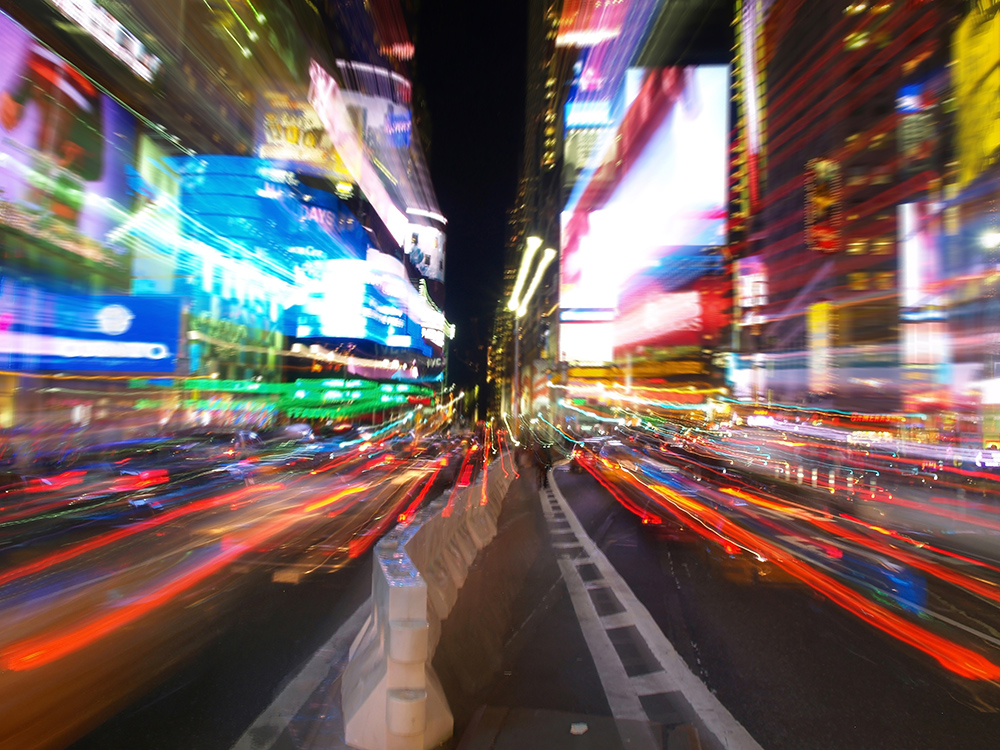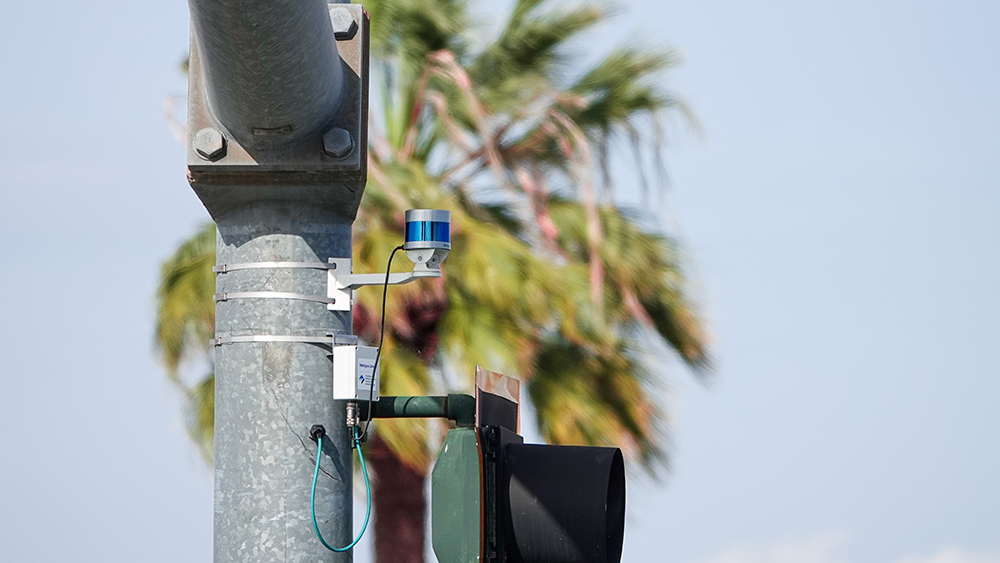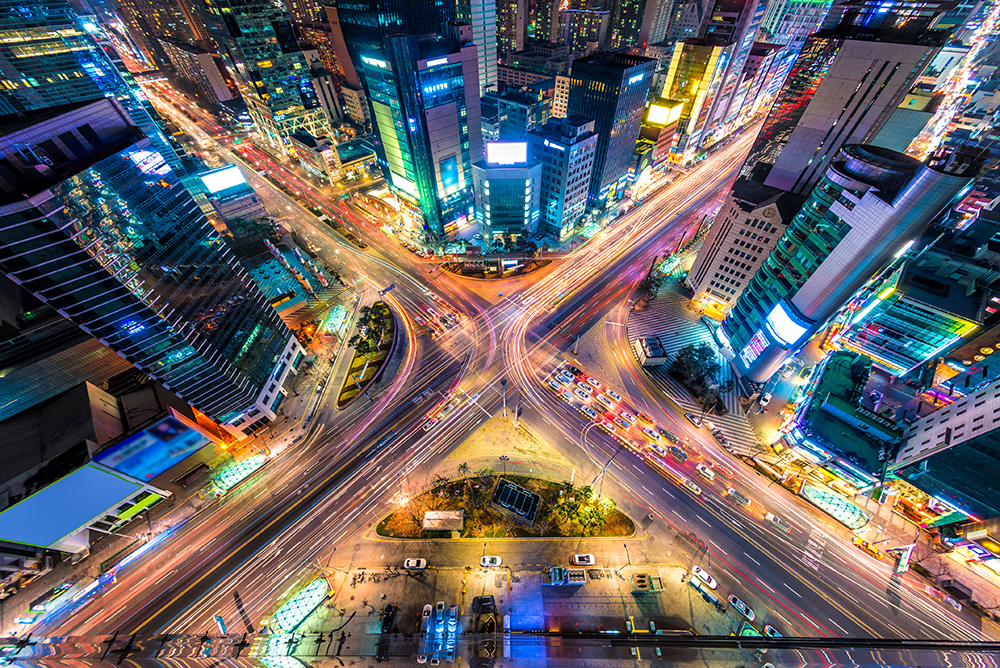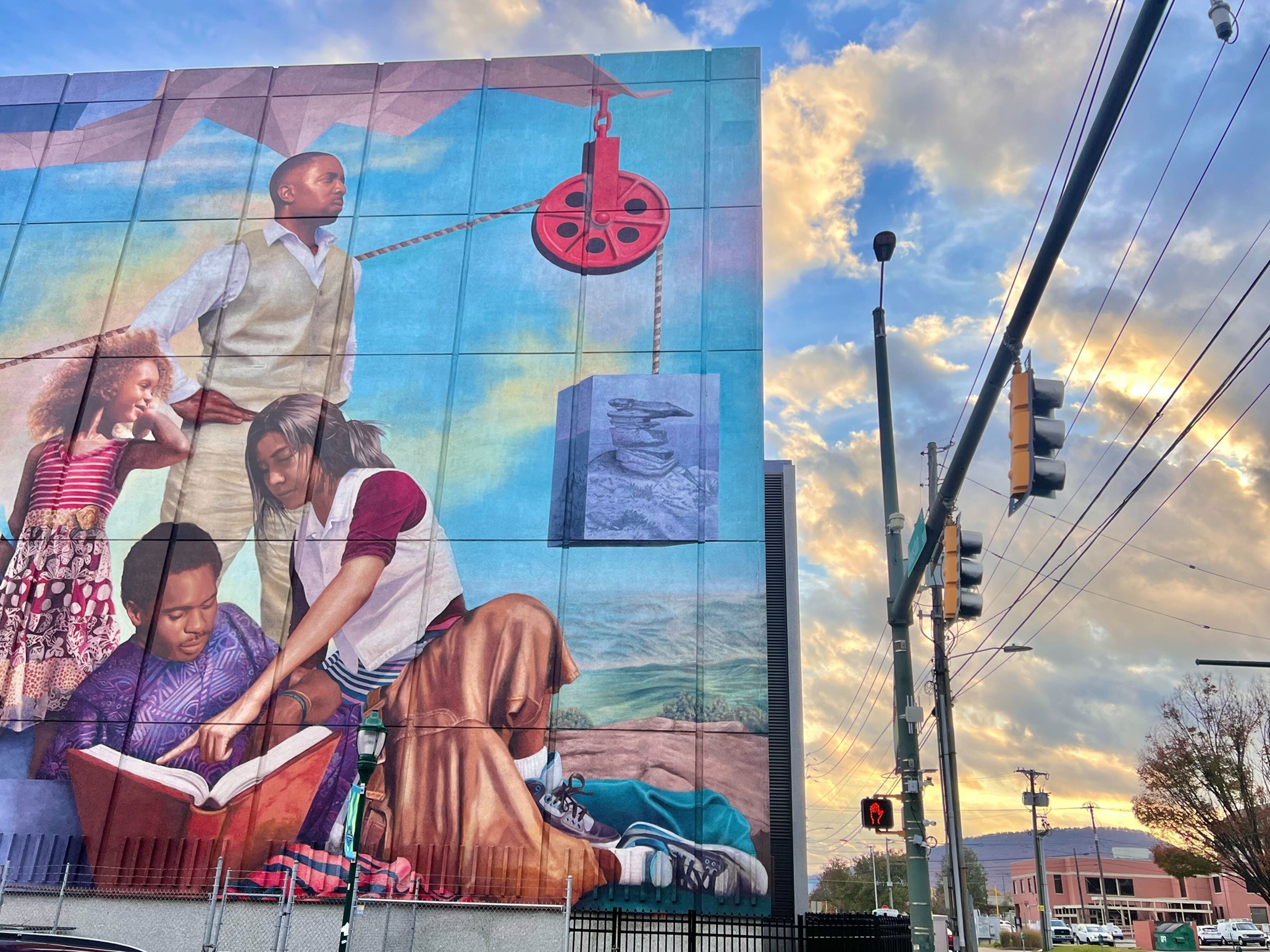
While Lidar is gaining ground in the ITS industry, it has not yet reached the level of mass adoption where it shows up frequently in requests for proposals (RFPs) from cities and DoTs.
Lidar performance has improved significantly over the years and it’s not a question of cost: hardware prices are “currently decreasing around 25% per quarter”, points out Raul Bravo, president founder of Lidar software processor Outsight. So perhaps it’s more a question of knowledge: those creating tender documents simply don’t know enough about Lidar’s compelling story when it comes to smart traffic – the reliable and precise object detection in any light or weather, with an accurate 3D image of the environment (unlike cameras), in high resolution (unlike radar), all while maintaining personal privacy.
Dr. Florian Petit, co-founder and chief experience officer at Blickfeld, says customers do see Lidar as “a powerful new mechanism that brings benefits no other technology can”. But he acknowledges: “Lidar has a lot to offer, much of which many people are not aware of, so our mission is definitely to also educate and bring awareness.”
Often, agencies and DoTs focus on the end application - for instance, speed enforcement or traffic light management - and not necessarily on the specific technology, says Pierre Olivier, CTO of LeddarTech. “In that sense, Lidar must contribute to increasing the level of performance or decreasing costs relative to the incumbent offerings,” he explains. “One thing to remember, though, is that agencies are looking for solutions, not for individual pieces of technology; it’s really up to the manufacturers and system integrators to demonstrate and deliver unique value by leveraging Lidar sensors.”
Lidar benefits
This suggests there is still a pressing need to explain the benefits to potential buyers and users. “We are not there yet to see a lot of RFPs specifically asking for Lidar,” confirms Asad Lesani, CEO of Bluecity. “We see some tenders asking for it, but it’s not that every state DoT, for example, or other cities in Europe, are specifically asking for Lidar. We need to educate municipalities.”

Cities looking at continuous tracking of multiple objects, or digital twin projects, or connected vehicle programmes or energy efficiency initiatives will be able to derive a lot more data from Lidar than they can typically get with a camera- or radar-based solution. “We need to have reliable data in a wider area to be able to share this information with connected vehicles,” he says. “We still see a lot of investment from municipalities – especially, for example, in Florida they are massively investing in V2X [Vehicle to Everything] applications and Lidar can really be a game changer for that.”
While he sees that most tenders are currently specifying camera-based solutions, Lesani is encouraged by the reaction from municipalities and state DoTs. “They get really excited about the capability of the solution,” he says. “We are showing them some of the case studies that we’ve been running with our city partners so they can see ‘why Lidar’. We show them the performance of the system in parallel with inductive loops and, probably, speed cameras. So all this information will help to educate the market.”
Lidar is definitely on the agenda though, says Gerald Becker, VP, market development & alliances at Quanergy Systems. “More and more we are seeing that Lidar is being specified as a major component of a holistic approach of integrating several sensors to provide safety and automation for smart cities,” he says. Use cases range from pedestrian safety, collision avoidance and perimeter intrusion applications to flow management counting visitors and travellers.
Performance gaps
Akram Benmbarek, AEye VP of business development and strategic initiatives, thinks that customers are evaluating Lidar because they know there’s a gap in performance and capability from their existing technologies. “For example, pedestrian safety at intersections and automated incident detection on highways have been challenging use cases in the past that are now being addressed thanks to Lidar,” Benmbarek suggests. “Typically, any application that requires reliable 3D detection in all lighting conditions at a relatively long range (50-300m) is well suited for Lidar.”
He says AEye’s 4Sight architecture is an intelligent, adaptive Lidar “that leverages real-time data on weather and traffic conditions, as well as incoming threats, providing a level of intelligence and safety that were not possible previously”. This is why forward-looking decision makers will find Lidar “is a critical necessity”.
Innoviz Technologies believes its new HD Lidar architecture, Innoviz360, will disrupt the market for traditional standard resolution spinning Lidars, and cut costs significantly. CEO and co-founder Omer Keilaf says Lidar can be regarded as another tool in the toolbox for agencies which need to build and maintain infrastructure, collect pedestrian or traffic data, and so on. “But for automated shuttles, trucks and robotaxis, RFPs should consider Lidar the tool best equipped to deliver on-road and roadside safety,” Keilaf insists. “It’s also best complemented with camera and radar technology. Lidar is the only sensor that can see what cameras, radars and the human eye cannot, making it critical for redundancy and meeting functional safety standards made by the automotive community. Adding Lidar on top of camera and radar technology offers the redundancy required for safe AVs.”
This makes Lidar an “absolutely necessary” component for Level 3 automated driving and above because of its ability to see what an eye, radar and camera may miss. It operates at different wavelengths from cameras, making it less susceptible to ambient interference such as blinding lights from oncoming cars, direct sunlight and sudden light changes – such as the shady areas when entering or exiting tunnels.
“Lidar is absolutely critical for AV infrastructure, especially geofenced infrastructure where ground vehicles drive autonomously without Lidar on the vehicle and instead rely on 3D data from Lidar sensors installed on the city infrastructure,” says Benmbarek.
“However, there is no one-size-fits-all solution,” Keilaf admits. “It’s less about the specific technology that makes a car safe, and more about the key performance metrics. Today, Lidar is the only technology capable of satisfying all performance parameters by the automotive community, including horizontal and vertical field of view, horizontal and vertical resolution, detection range, frame rate and reflectivity response. It is also durable and can maintain its performance across varying terrains and in adverse weather situations.”
Austin Wilson, Velodyne Lidar director of intelligent infrastructure, makes the cost argument. “It takes one Lidar system to cover an entire intersection, whereas it takes up to eight camera/radar solutions to achieve the same coverage,” he says.
Reduced costs
“In most cases, we just use a single Lidar to cover the whole intersection which dramatically reduces the cost of installation - typically we use the same pole that we have for the traffic cabinet so there’s no underground wiring to bring data or power,” Lesani agrees. “And the other interesting aspect is privacy. So with Lidar there is no way that we can identify or extract any biometric data, skin colour, we can’t see faces of people or licence plates. So we can easily comply with GDPR. Lidar can provide the resolution of a camera and the reliability of radar - with a single sensor.”
Radar in particular has a problem with picking up ‘soft’ objects – such as human beings. In automotive, Velodyne offers a Lidar-based pedestrian automatic emergency braking solution which, the company says, delivers superior performance in all conditions, a decisive advantage over radar-plus-camera-based systems. “This can advance advanced driver assistance systems and autonomous vehicles [AVs],” Wilson continues. “That said, while autonomous and highly-automated systems should be Lidar-inclusive, other sensors, such as cameras and radar, may be a critical part of the system. For example, AVs should be equipped with a suite of sensors. Lidar should be the foundation of the system, with additional sensors providing the most comprehensive performance across a wide range of road conditions.”
It’s not only AVs: in some cases you may see all three technologies deployed together for highway vehicle tracking “for speed, location and identification in which all three sensors can provide a piece of the story”, says Becker at Quanergy.
There is room for several different types of sensor, then, but while others have been able to capture our surroundings, none has been as comprehensive as Lidar, thinks Seoul Robotics CEO and founder HanBin Lee. “Each of these technologies have their current strengths and weaknesses and part of what we do is look for ways where the strengths of Lidar can augment with other sensors to empower them to take care of their limiting factors and elevate projects to the next level. Right now we have projects that use multiple technologies to get the best results by bridging the gaps. Cameras have extremely high resolution and colour, but do not have range information. Radar has long range, but low resolution. Lidar sits exactly in between.”
Seoul Robotics’ idea, therefore, is not to replace camera-based computer vision systems, but to make them better by adding the 3D element to it. “AVs are leading the way right now with how all three technologies can work together for more complex mapping,” says Lee. “They require so much more information to function and companies are either using all three or would be performing better if they did.”

Proven performance
Tolling is also an area where Lidar can work well, says Steve Bird, CEO of Red Fox ID. “Lidar is close to the ideal resolution for tolling applications, not more than is needed like cameras or too little like radar,” he explains. “Unlike a camera a Lidar is self-illuminating and a well-designed Lidar is less susceptible to sun glare. Lidar has proven to work in poor visibility conditions when compared to a camera, though radar is pretty good in rain and sun, but is low-resolution which makes shape-based profiling more challenging. A Lidar-camera combined sensor would be very beneficial. Mostly this is going to integrate two important tolling functions (detection and VES) into a single installable package.”
Safety is another crucial metric in which Lidar can chime with the needs of agencies, says Velodyne’s Wilson, pointing to US National Highway Traffic Safety Administration figures which said that motor vehicle traffic fatalities rose a staggering 18.4% in the first half of 2021 from the same period in 2020—more than 20,000 deaths—the largest six-month increase ever recorded.
“Transport agencies recognise Lidar as a critical component for a safe, autonomous future, making it a valuable application within their armoury,” Wilson says. “Velodyne collaborates closely with policymakers to ensure Lidar sensing technology is contemplated in programmes that support connected vehicles and intelligent infrastructure, like those in the recently enacted [US] Infrastructure Bill.”
Itai Dadon, VP smart infrastructure at Ouster, picks up that theme. “Lidar is best suited for any use case where accurate 24/7 outdoor detection of all road users is critical,” he says. “Use cases like pedestrian safety and intersection monitoring are a great fit for Lidar. We’re seeing a lot of traction in pedestrian safety, driven by Vision Zero initiatives worldwide and driven by the reality that cameras are not sufficient in protecting vulnerable road users in the most vulnerable conditions, such as nighttime, in inclement weather and in areas outside of the crosswalk. Lidar can fulfill those gaps.”
Game changer
While many in the Lidar industry (understandably) describe the technology as a ‘game changer’, there is also widespread acknowledgement of potential limitations.
One of the attractions of Lidar is that it is very well suited to act as a general-purpose sensor for many applications, says Olivier. “Like camera images, Lidar point clouds are relatively easy to analyse with both classical machine-vision algorithms as well as AI and deep learning since they have very good ‘explainability’, whereas radar data is much more complex to analyse and process,” he says.
“Like all sensors it is important to understand both the strengths and the limitations of the technology,” says Bird. “Lidar needs to be matched with appropriately-designed software to ensure that an efficient system solution is created. All too often, sensors are chosen without fully considering all the other aspects of the system - for example, it is easy to add a sensor which then requires considerable computing resources to produce a real-time result.”
In tolling, Bird goes on, the more efficient systems are easy to install, have lower power budgets, smaller heat loads and are less complex to maintain for the next 10 years. “However, a single sensor is unlikely to be able to capture all of the parameters required by a modern tolling system,” Bird says. “For example, counting axles using overhead technology is very difficult to do whilst at the same time maintaining the levels of accuracy you can obtain with a well-designed ‘in-ground’ system. Not all toll systems count axles, so Lidar as the only sensor can be a very good fit for some requirements, but it will need to be supplemented with other sensors where requirements dictate.”
The same is true of Lidar in other traffic applications, says AEye’s Benmbarek. “Its application is not exclusive and doesn’t necessarily respond to all customers’ needs,” he begins. “In mobility, Lidar is commonly used in conjunction with cameras, where the camera has sufficient resolution and colour information to determine identification and confirmation, and Lidar’s role is to accurately detect, determine position and track. Typically, for all safety-related applications, redundancy is required - so it’s not unusual to see two or three sensing modalities used simultaneously.”

Working together
Gerald Becker at Quanergy agrees that Lidar on its own can provide benefits, but when paired with other Internet of Things devices such as cameras it provides “so much more visibility and automation”. But he cautions: “Lidar in itself cannot solve everything.”
Pierre Olivier of LeddarTech sees Lidar as a ‘happy medium’ between camera and radar. “Camera can be very effective under controlled environments, but it still struggles with lighting, shadows and weather conditions and overall performance is very much dependent on the installer’s expertise,” he explains. “Radar is relatively immune to environmental effects and is very good at measuring speed, but resolution remains a challenge, for instance in separating and tracking multiple vehicles in dense traffic. Lidar can help bridge the gap.”
You need, above all, to be in dialogue with your customers about the pros and cons. “The other sensor types have their advantages and as a trusted partner, of course, we also have to be critical about too-high expectations,” says Florian Petit. “I think if you’re looking for long-time collaborations, open and honest discussions are natural.”
Itai Dadon, VP smart infrastructure at Ouster, adds: “Every use case is unique, and as a Lidar company, we have the responsibility to consult our clients on the best technology that is best suited – whether that is Lidar or something else.”
Above all, it’s important to be realistic, says Olivier. “Perception is a complex problem, and Lidar is one of the various tools that can be used to solve this problem. We have had enough experience deploying Lidar in various applications in the last decade to have a very good understanding of its benefits and drawbacks.”
But he warns: “Even though we’re a Lidar vendor, we don’t view Lidar as a ‘silver bullet’ and there is a danger that hyping a technology as such can discredit Lidar as opposed to promoting adoption.”
So it’s fair to say there is a range of views over the right applications for Lidar – and a realistic appraisal of the technology’s limitations. But there is also a sense that this is an exciting, cost-effective solution for many of current and future challenges in the ITS industry.
Steve Bird of Red Fox ID concludes: “Of all the sensors we have worked with over the last 20 years, Lidar offers real benefits.”












